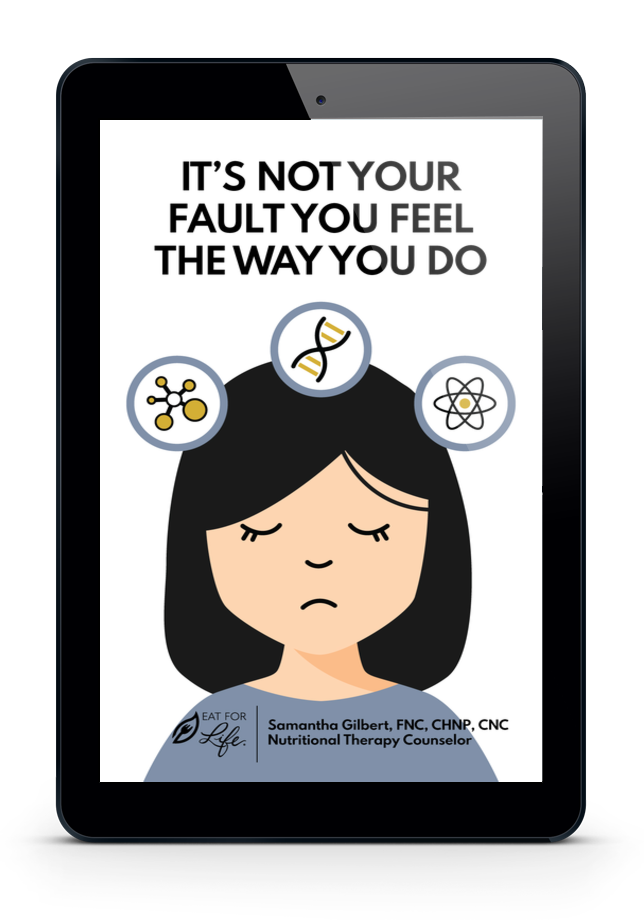In 2012, the CDC published its Summary Health Statistics for U.S. Children: National Health Interview Survey. In it, they claimed an estimated 5.9 million U.S. children ages 3-17 were diagnosed with ADHD.
This survey also claimed boys were three times more likely than girls to have ADHD, but the statistic that stands out the most has to do with the general health status of the children surveyed. The report said that children surveyed who had a fair or poor health status were almost seven times more likely to have a learning disability, and almost four times more likely to have ADHD.
I’m sure you already know (and probably have experienced) that attention deficits, hyperactivity, and learning disabilities have soared in the last few years to epidemic proportions. It seems most people these days have trouble concentrating and completing even basic tasks, impacting young and old alike.
There is a gross misunderstanding of ADHD symptoms and the methods used to diagnose the disorder, which I’ll get into later, but first, let’s look at some Centers for Disease Control (CDC) stats:
- A survey of 76,000 parents conducted every four years estimates that one in 11 children had been diagnosed with ADHD by a health care professional, an increase of 42% between 2003 and 2014.
- The percentage of children taking drugs jumped by more than a quarter, from 4.8% of the population between 4 and 17 to 6.1% between 2007 and 2011.
- Not surprisingly, there was even a brief shortage of ADHD drugs such as adhd medication, adhd medication, Dexedrine, and Stratera in 2011 and 2012 because the demand was outpacing the supply. Yikes!
While it’s true we live in a time where technology and screen time has literally changed how our brains process information, this doesn’t account for the staggering rise in attention deficit disorders, also known as FAS or Focus and Attention Syndromes.
So why is ADHD on the rise?!?
Like autism, ADHD is part of a cluster of symptoms that includes OCD, oppositional defiant disorder (ODD), anger and rage, depression, anxiety, extreme temper tantrums and mood swings, sleeping difficulties, and learning disabilities such as dyslexia, to name a few.
And it’s not just relegated to one family member. If you step back and take a good look, you’ll notice other family members share in these cluster symptoms. This is because ADHD is an inherited condition, something called transgenerational epigenetic inheritance.
Epigenetics is the science of how your genes perform over your lifetime and whether those changes can be passed down to future generations and is influenced by environmental factors that impact your ability to think, focus, and concentrate effectively.
Environmental factors include things like the 4×4 burger, animal style fries, and Neapolitan shake you had at In & Out for lunch. It’s not simply about the genes and not simply about the environment. Both are factors that contribute to biochemical imbalances in the brain, which in turn can affect your child’s functional capacity.
What Causes ADHD in Children?
The 4 biochemical subtypes associated with Focus and Attention Syndromes (FAS) include:
- High Copper
- Undermethylation
- Overmethylation
- Yeast Toxicity
High Copper
The first of the four biochemical subtypes, high copper, may play a key role in Focus and Attention Syndromes (FAS). Toxic copper should be removed by natural processes in the body, and our body is generally good at getting rid of toxins. But in many children with FAS those mechanisms break down and don’t work as efficiently as they should. There are some FAS individuals who can’t get rid of copper biochemically. Copper is hyper-excitable to our nervous systems. If you need coffee to get your body going in the morning, it’s likely due to the high copper content inside your cup.
When you have too much copper you get short-circuiting of processes and see inattention or hyperactive behaviors. Neural activity can be affected by a copper overload. We can run lab tests for a variety of additional elements that affect hyperactivity, focus, attention, and anxiety. Low zinc patients can’t regulate GABA, (Gamma Amino Butyric Acid), one of the calming neurotransmitters that are present in the brain. A proper copper/zinc balance can contribute to alleviating symptoms of Focus and Attention Syndromes (FAS) in most patients.
If a patient’s copper imbalance is from a biochemical inability to get rid of it, we call that metal dysmetabolism. This is one form of Focus and Attention Syndromes (FAS) we commonly treat. In metal dysmetabolism, the body stores excess copper and needs targeted nutrient supplementation to keep the copper/zinc ratio at an optimal level.
Undermethylation
The second of the four biochemical subtypes is undermethylation. Methylation is the ability of the body to turn on or off certain enzymes, hormones, neurotransmitters, different chemicals by way of certain methyl groups. Methyl groups (Me) have one carbon atom bonded with three or more hydrogen atoms. These methyl groups can radically alter you, your perceptions, and your behavior. It can affect the actual type of job that you get in the future.
People with few methyl groups, also called undermethylators, are perfectionistic, persistent, high achieving. Patients diagnosed with ADHD are predominantly in the undermethylation category.
Overmethylation
The third of the four biochemical subtypes is overmethylation. People with too many methyl groups, also called overmethylators, tend to be more laid back. They sit back and take it easy about things. They are also thrill-seekers. Overmethylation plays an important role in the presentation of ADD symptoms. This subset of ADD can often be seen as an early presentation of bipolar disorder. We commonly see that cross over bridge when we do biochemical testing in the overmethylated population.
Yeast Toxicity/Overgrowth
The fourth and final of the biochemical subtypes is yeast toxicity. It is very important to test for yeast presence in young children with Focus and Attention Syndromes (FAS). Poor focus, attention, impulsivity and anxiety are often related to yeast toxicity. It is a primary challenge in pediatric cases of FAS. The treatment of yeast toxicity can resolve all symptoms of ADD/ADHD/FAS. Often treatment takes three months before symptoms resolve, and treatment may need to be repeated in the course of a year to keep yeast toxicity from reoccurring.
Lastly, it’s important to understand that within the Four Biochemical Subtypes of ADD/ADHD/FAS, or Focus and Attention Syndromes (FAS), we often see a combination of biochemical imbalances. For example, it is not uncommon to have a patient with both undermethylation and yeast toxicity.
Patients diagnosed with ADD/ADHD need a comprehensive treatment plan in order to provide a true resolution to their symptoms.
If you know of someone who struggles with ADD/ADHD/FAS, please share this post. If you struggle, please share your experience in the comments below. It is through sharing your story that we create community, eliminate guilt and shame, and bring about healing.






